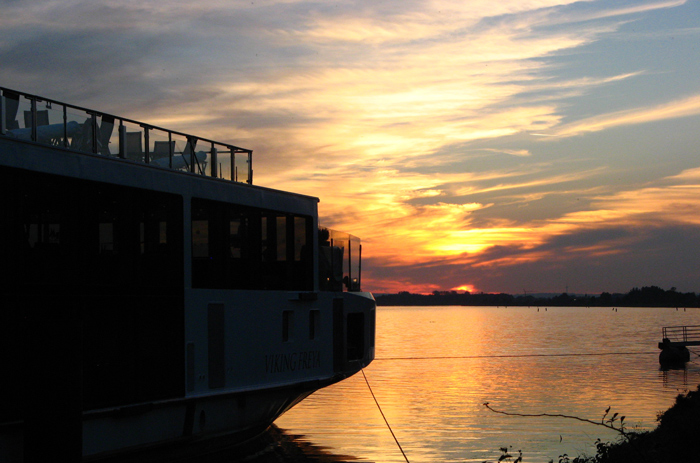Weltenburg Abbey
-
The first phase of this journey to Weltenburg was a coach ride upstream to Kelheim. Hardly across the river from Regensburg, we had a fleeting glimpse of the Walhalla Memorial:
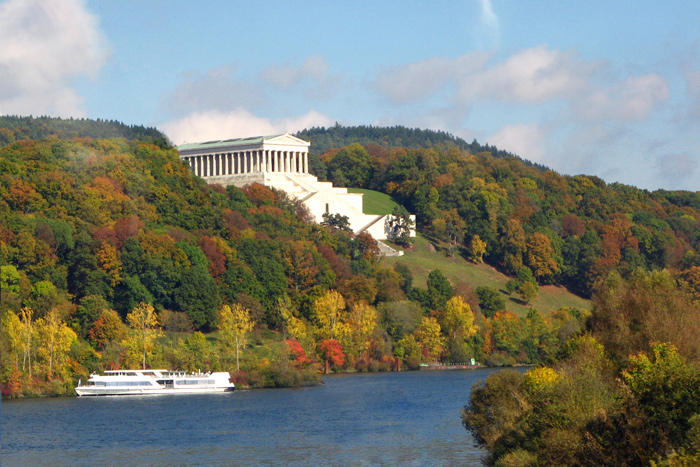
Resembling the Parthenon, this creation of Ludwig I of Bavaria might be described as a German Hall of Fame. It honors distinguished people of the past 2000 years but, primarily, those of the “German tongue.” Inside are 65 plaques and 103 busts that are occasionally added to even today. The Walhalla (after Valhalla, the home of the gods) was completed in 1842.
Deposited in Kelheim by our coach, we began a walk through town to an excursion boat that would carry us to the abbey. Firstly, though, we stopped for some liquid refreshment at a beer garden:
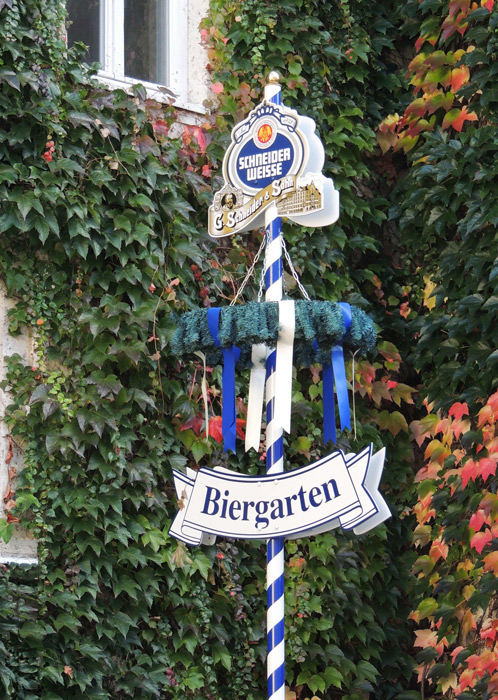
More precisely, this was the Schneider Brauhaus in Kelheim, Germany’s oldest wheat beer brewery:
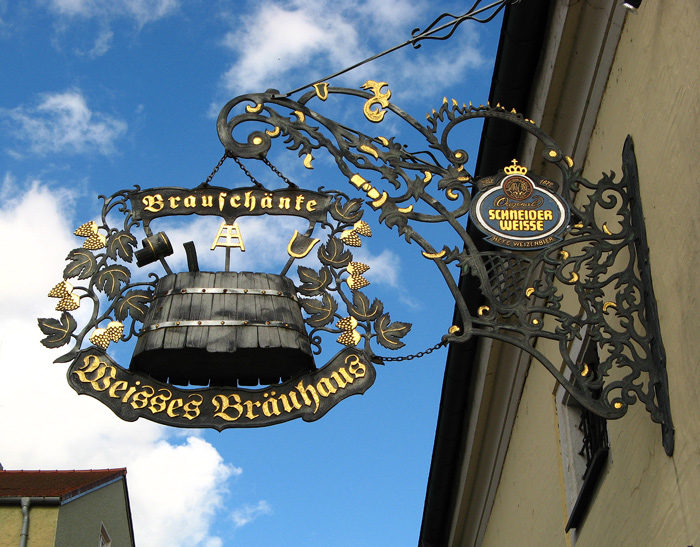
Its famous white beer can be enjoyed inside in a sunny or shady spot, as you choose.
On our feet again, we finally reached our boat on the far side of Kelheim. Even before departure, we spotted another Ludwig I creation, Liberation Hall (aka, Befreiungshalle):
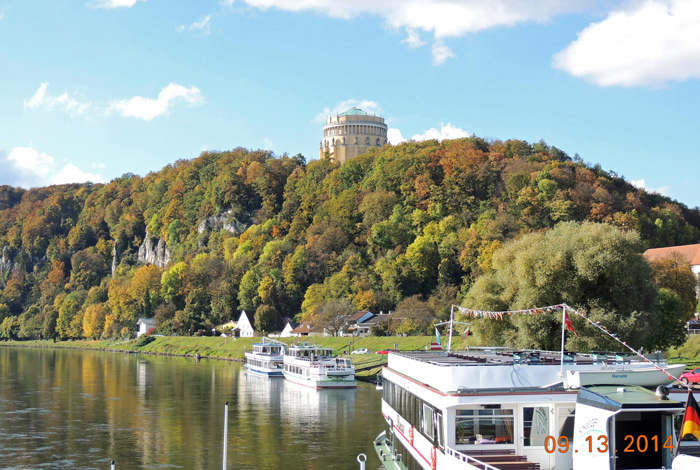
Later, on this voyage of discovery, we had an even closer view:
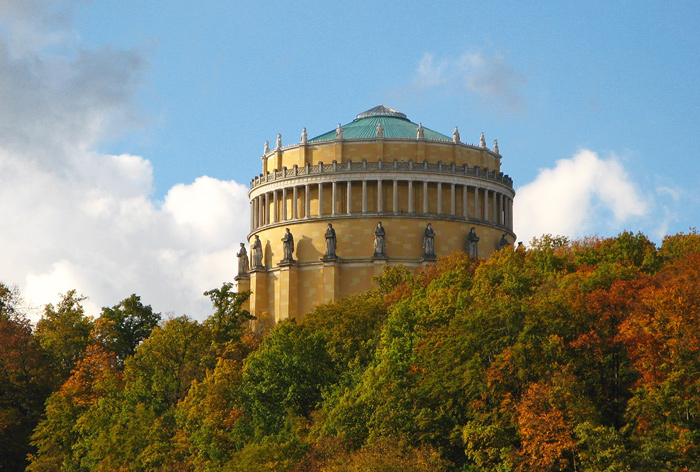
King Ludwig ordered this memorial to commemorate German victories against Napoleon (1813 - 1815). It was completed in 1863. We had no chance to see the interior, of course. However, an Internet photo reveals 34 white marble statues of victory angels, arranged in a circle, that represent the 34 states of the German Federation at that time:
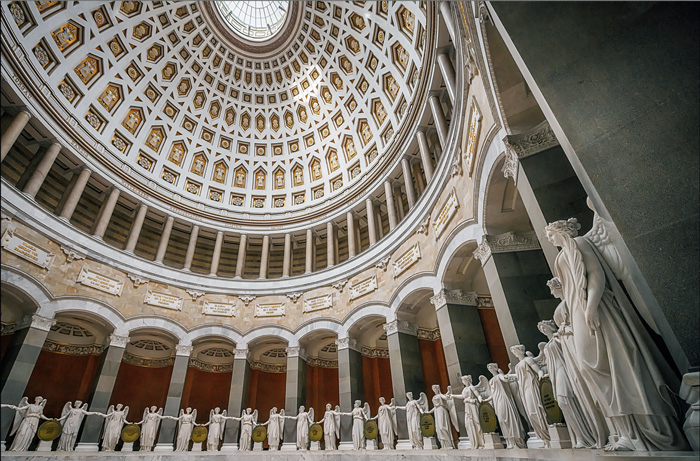
They hold round tablets, made of metal from captured enemy guns, inscribed with the names of 17 battles fought against Napoleon.
Casting off and headed upriver, we traversed a stretch called the Danube Narrows:
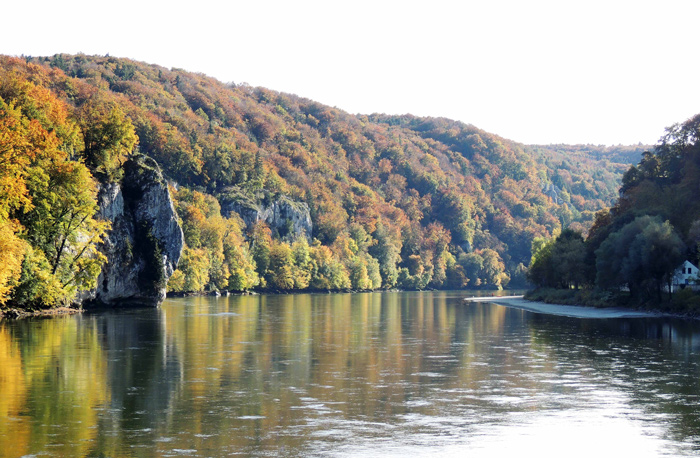
Longboats such as the Freya cannot navigate this twisty, steep-sided section of the Danube.
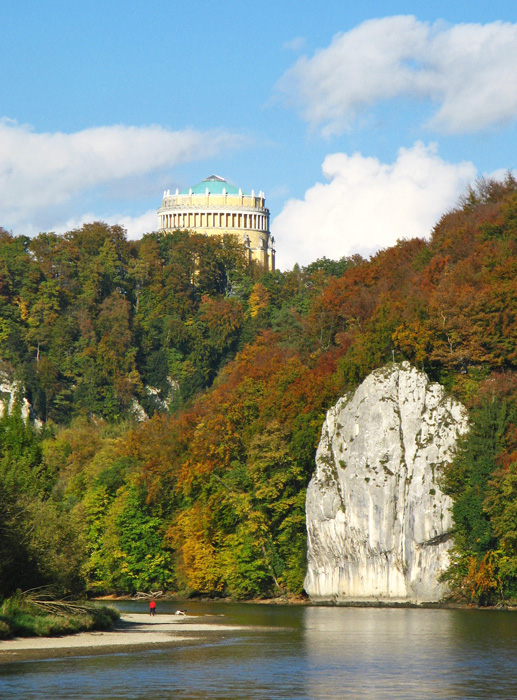
We had our first sighting of Weltenburg Abbey before docking:
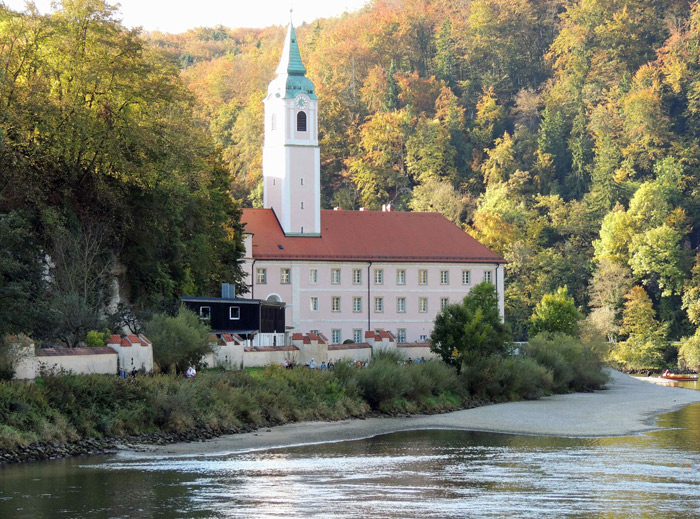
It is unknown why the Benedictine monks chose this spot --- so prone to flooding --- for the abbey. Over the centuries since its founding in 620 AD, the abbey has repeatedly suffered severe water damage due to its proximity to the Danube. Its present Baroque form dates from 1739.
As we had chosen the lower deck, Patty and I were first off the boat. Somewhere on that top deck are Jan and Diane:
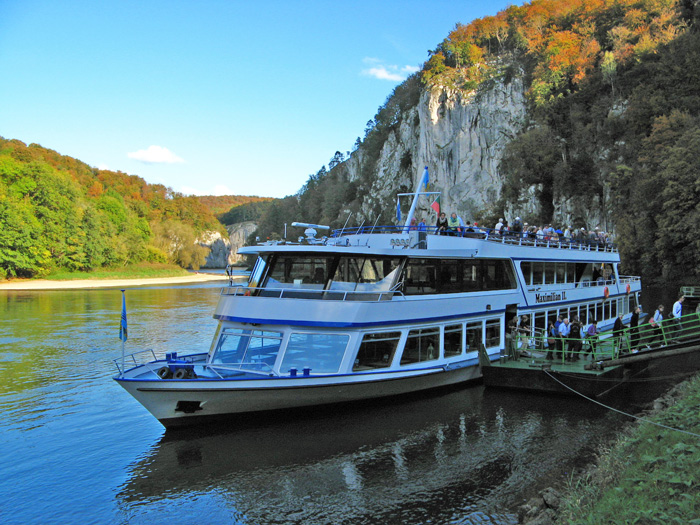
Oh, there they are:
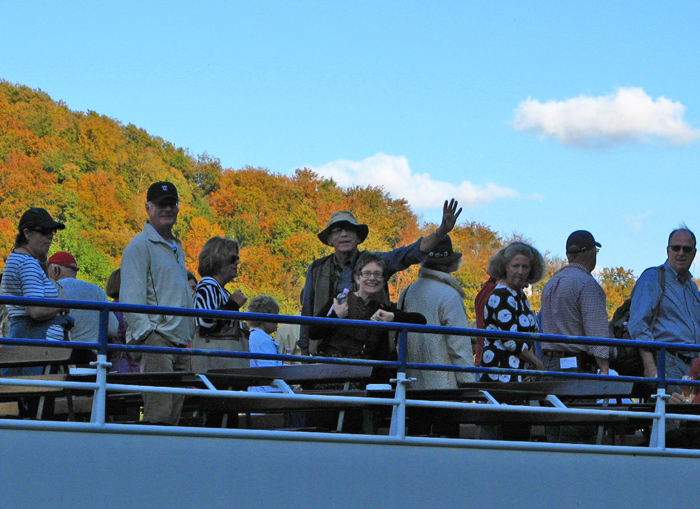
An aerial shot from the Internet vividly depicts how the abbey buildings wrap around the tip of a peninsula:
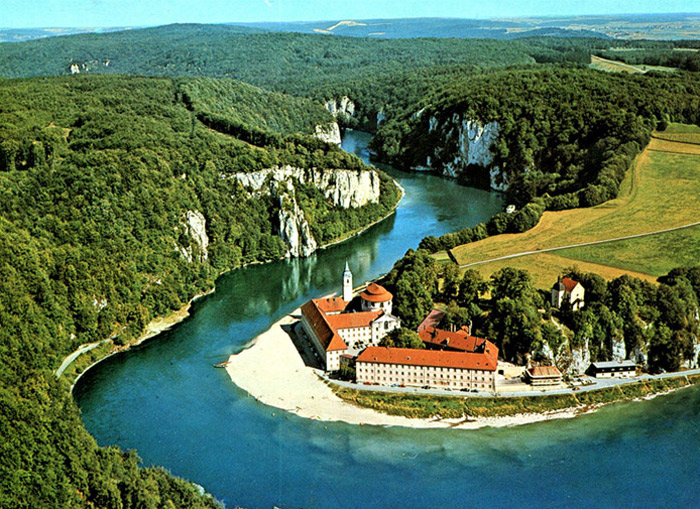
Our excursion boat approached from top center and landed on the far side of the bell tower. From there, we walked around to the main entrance and into the courtyard:

The abbey church is the top sight here; so, in we went under the beckoning statue of St. Benedict:
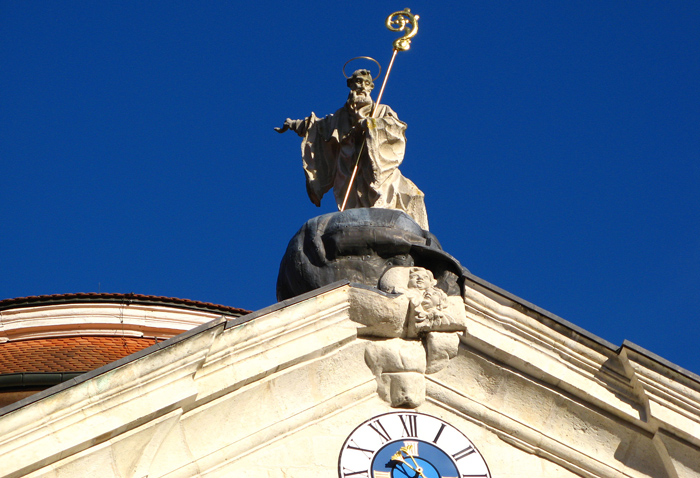
The church is named after St. George, the patron saint of the monastery. It is, therefore, no surprise to see a statue of him behind the main altar, struggling with the dragon, likely a representation of evil:
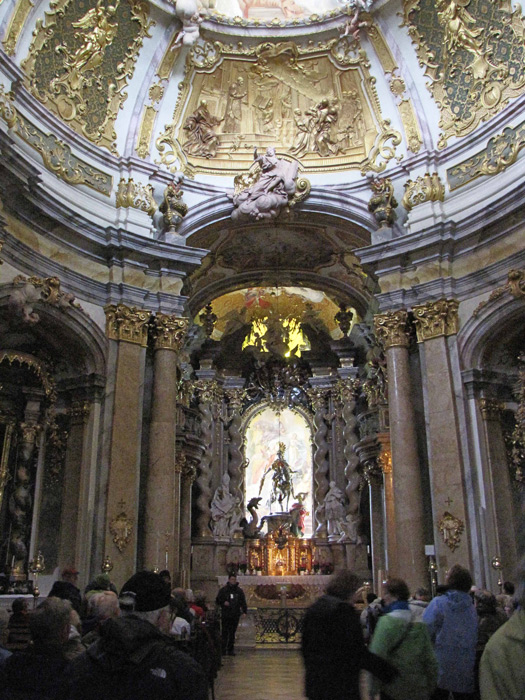
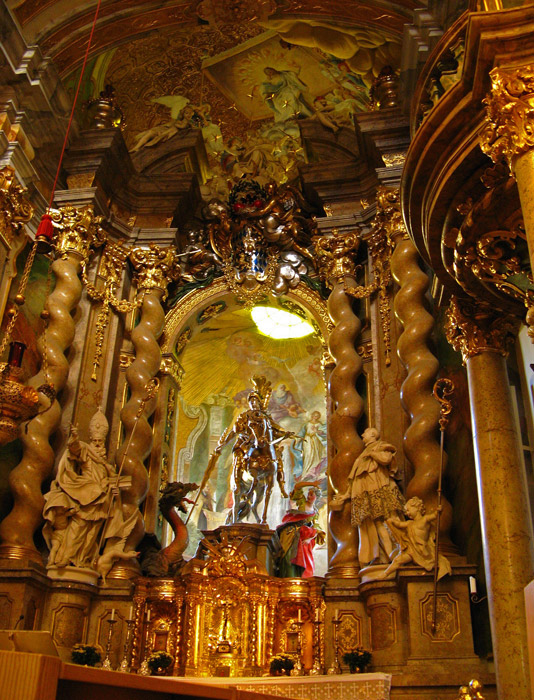
This relief, one of several overhead, is above the main altar ...
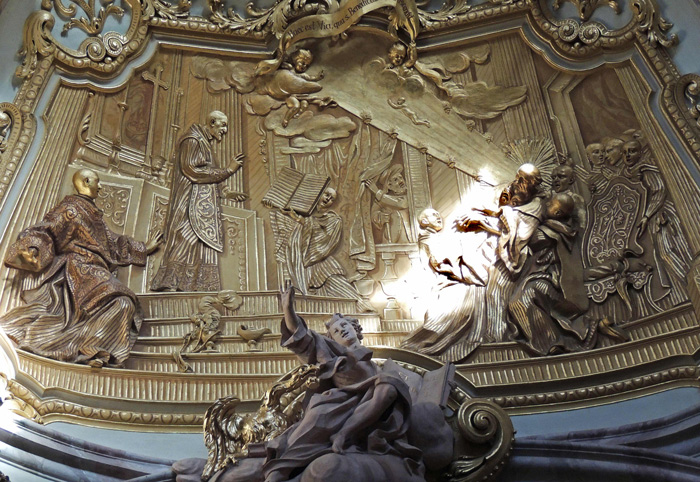
... while straight up is a depiction of the Trinity crowning Mary as Mother of the Church:
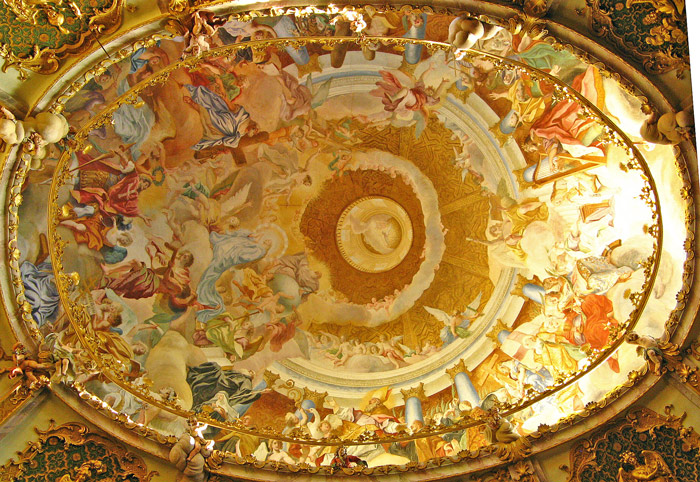
On a more down-to-earth level, the abbey is also noted for its beer-making prowess. Many visitors sample a glass of the brew in the courtyard garden. However, perhaps because we had already had our share earlier or due to a shortness of time, we were escorted out to meet a waiting bus.
Firmly etched in memory, our half-mile walk along the banks of the Danube was very pleasant:

This steeple marks the spot we met and boarded our bus:
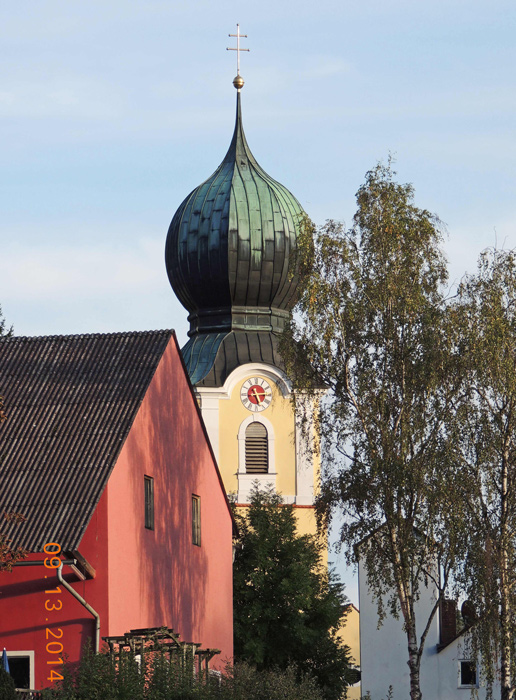
In no time at all, we rejoined the Freya, waiting patiently downstream of Regensburg:
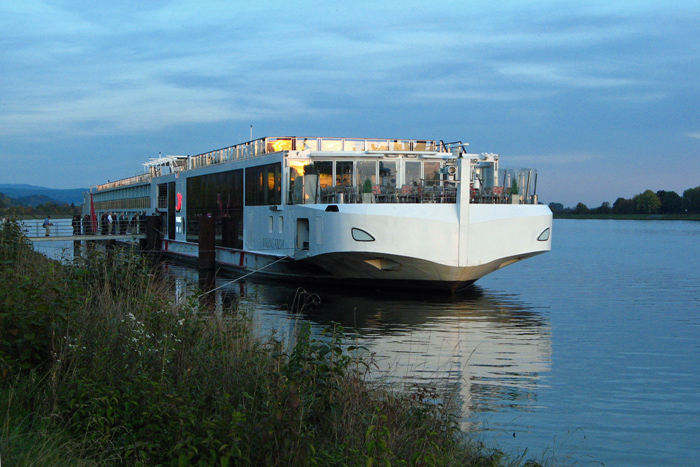
Sunset marked the end of this full but wonderful day of touring:
